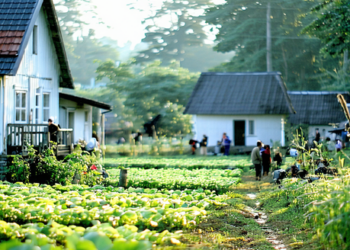Understanding the Need for Affordable Senior Housing
As the population ages, the demand for affordable senior housing continues to rise. Many seniors live on fixed incomes, making it difficult to afford rising housing costs. Additionally, the aging process often comes with increased health care needs and decreased mobility, necessitating more accessible and supportive living environments. Affordable senior housing options can help alleviate financial burdens while providing the necessary support services. These options also promote independence and dignity among seniors, enabling them to age in place within communities they are familiar with. Understanding this need requires recognizing the unique challenges faced by low-income elderly populations and advocating for policies that facilitate more affordable housing solutions.
Government Programs Supporting Senior Housing
Several government programs aim to support affordable senior housing, recognizing the growing need among the aging population. Programs like the U.S. Department of Housing and Urban Development’s (HUD) Section 202 Supportive Housing for the Elderly provide capital advances to support housing development. These programs also offer rent subsidies for low-income seniors. Additionally, initiatives like Medicaid waivers can help cover the cost of assisted living services. Such government support is crucial in bridging the gap between the high cost of senior housing and the financial limitations of many elderly individuals. A comprehensive understanding of these programs can empower seniors and their families to seek the support they need.
Nonprofit Organizations Offering Senior Housing Solutions
Nonprofit organizations play a critical role in offering affordable senior housing solutions. These organizations often bridge the gap where government programs fall short. By leveraging donations, fundraising events, and volunteer efforts, nonprofits like Mercy Housing and Habitat for Humanity develop and manage affordable housing units for seniors. They also provide supportive services such as transportation, meal delivery, and social activities, enhancing the quality of life for their residents. These organizations are crucial in creating sustainable and effective housing solutions that cater to the unique needs of the aging population, making a significant impact on senior living standards.
Innovative Housing Models for Seniors
Innovative housing models for seniors are emerging to address the diverse needs of an aging population. Concepts such as cohousing, where seniors live in private residences but share communal spaces and responsibilities, promote social interaction and community support. Alongside these developments, there is a growing emphasis on designing these spaces to be more environmentally sustainable. Similarly, tiny homes and accessory dwelling units provide affordable and manageable living spaces without compromising independence. Technological advancements, such as smart home features and telehealth services, allow seniors to maintain autonomy while ensuring safety and health monitoring. These models offer creative ways to provide affordable, adaptable housing solutions that encourage active aging and community involvement.
Tips for Finding Affordable Senior Housing
Finding affordable senior housing requires proactive planning and research. Begin by assessing financial resources and identifying housing needs, such as proximity to health care facilities and accessibility features. Utilize online resources and directories specializing in senior housing options. Networking with local senior centers, support groups, and community organizations can provide valuable leads. Consider exploring government programs and nonprofit organizations that offer financial assistance or affordable living arrangements. Additionally, engaging with housing counselors can help navigate legal and financial considerations. By being thorough and strategic, seniors can find housing options that meet their needs and financial constraints.
Future Trends in Senior Housing Development
Future trends in senior housing development are focused on sustainability, technology integration, and community engagement. Developers are increasingly incorporating eco-friendly materials and energy-efficient designs to create sustainable living environments. The integration of technology, such as smart home systems and telemedicine, enhances the safety, comfort, and health management of residents. Furthermore, there is a shift towards creating age-friendly communities that promote social cohesion and active lifestyles. Multigenerational living arrangements are also gaining popularity, fostering interaction between different age groups. As these trends continue to evolve, they promise to create more holistic and inclusive housing solutions for the aging population.



